

Modern digital cameras attached to the Motic AE2000 inverted microscope using LM adapter solutions – a flexible configuration for a variety of photomicrography applications
Because we found that Motic’s stereo microscopes offer a compelling blend of value and performance in their price range, we also wanted to take a closer look at an inverted microscope from Motic. The AE2000 is a good pick for our review, because it is a versatile microscope that is suitable for many areas of application, ranging from routine lab or clinical work to research requirements in pharmaceutical laboratories.
As a routine microscope, the AE2000 offers brightfield and phase contrast modes. Following Motic’s proven successful CCIS plan achromatic, infinity-corrected objectives, the company launched a new series of objective lenses. They are held in a left side facing, quadruple revolving nosepiece. The objectives for brightfield and phase contrast observation are available for magnifications of 4x, 10x, 20x and 40x. The 4x phase lens – a novelty in this price range – is dedicated to quick and efficient sample screening. Of course, a more diverse range of applications with specialised imaging such as fluorescence or DIC would be desirable for an inverted microscope, but considering the price (approx. EUR 3,300), the contrast techniques supported by the AE2000 are quite satisfactory.
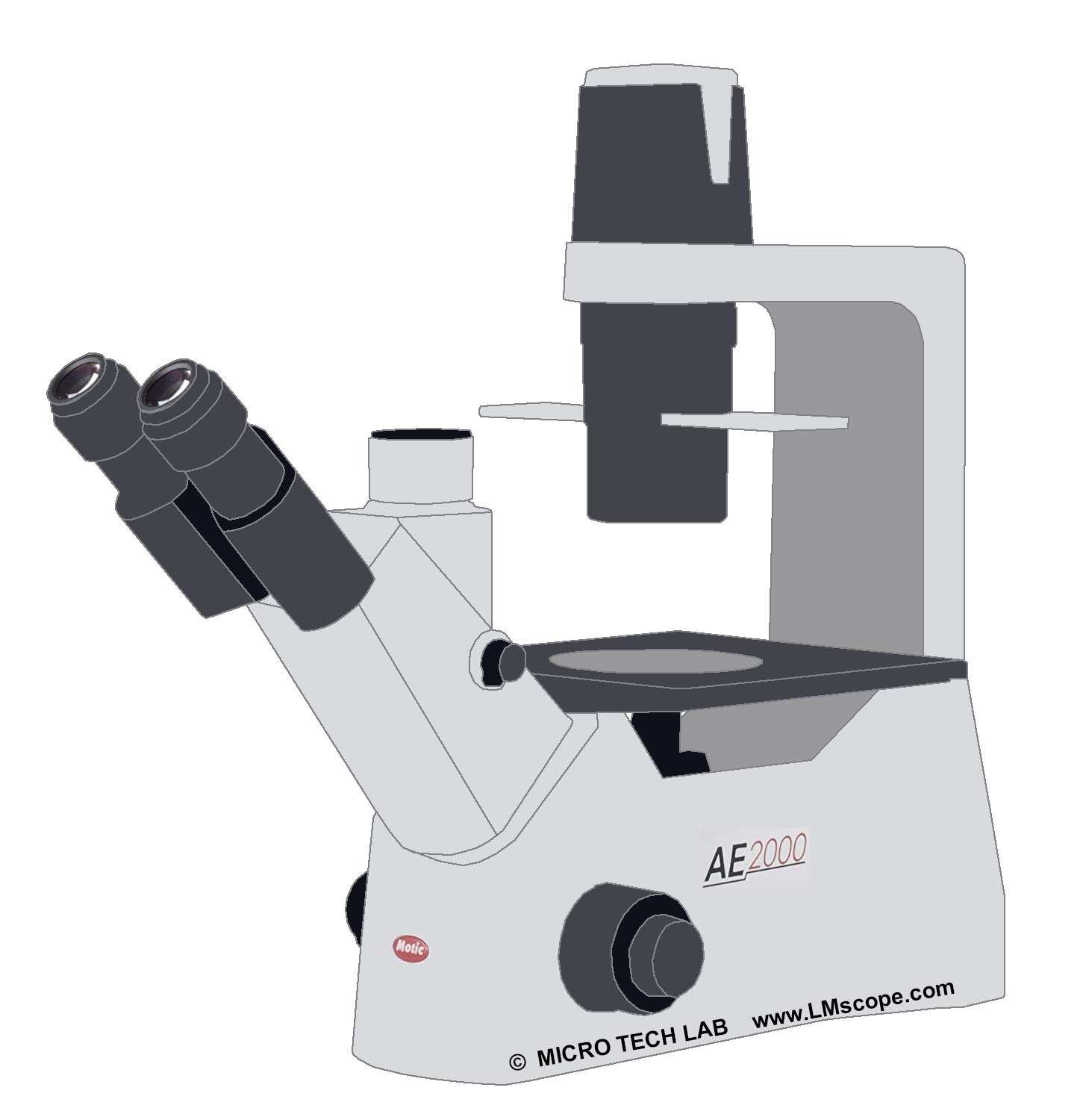
Designed as a versatile instrument for any life-science lab, the AE2000 comes in three different tube versions. Besides the standard binocular and trinocular versions, Motic also offers a binocular ergo model, which allows an extra 40 mm of adjustable viewing height. All three versions can be equipped with reticules for measuring purposes. Despite its robust design, the AE2000 has a surprisingly small footprint, which improves workplace ergonomics.
For photomicrography applications, we recommend cameras with large (APS-C or full-frame) sensors. Modern DSLR and DSLM cameras are very well suited for microscopy applications and offer many advantages in comparison with C-mount special cameras, which are described in more detail here. We have put together a guide to help you choose the camera that is best suited for your needs.
With our LM microscope adapters, it is possible to attach almost any DSLR and DSLM camera, as well as many C-mount cameras, to the phototube (inner diameter: 38 mm, light split: 20/80) of the AE2000.
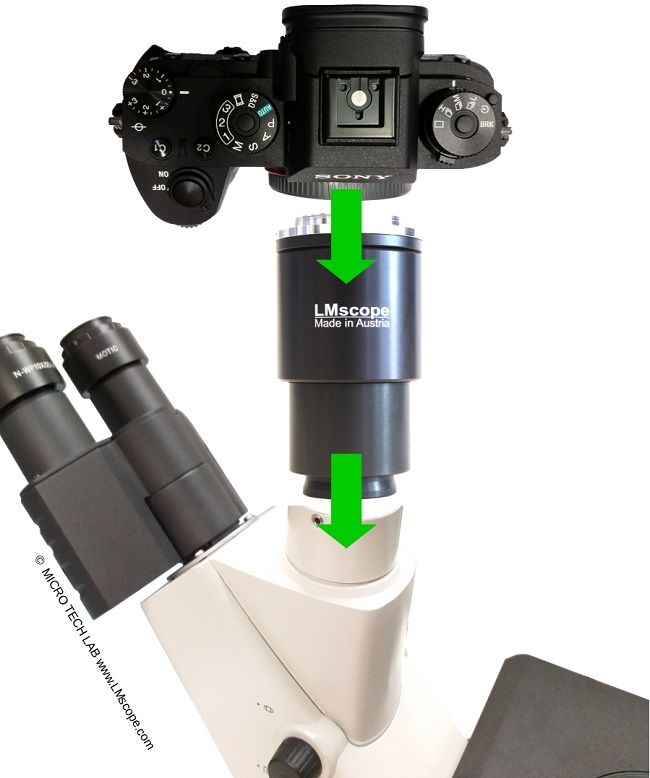
A major advantage of our products is that they are not tied to a specific camera and/or microscope brand; another advantage is the flexibility of our adapter solutions. We can offer a range of adapter solutions for the Motic AE2000, each with different pluses and minuses:
1) The most affordably priced version has been specifically designed for the phototubes of Motic microscopes. It is not focusable, but works with both APS-C and full-frame sensors. Switching to another camera brand is very easy, but because the adapter has been specifically designed for Motic phototubes, changing microscope brands is not an option.
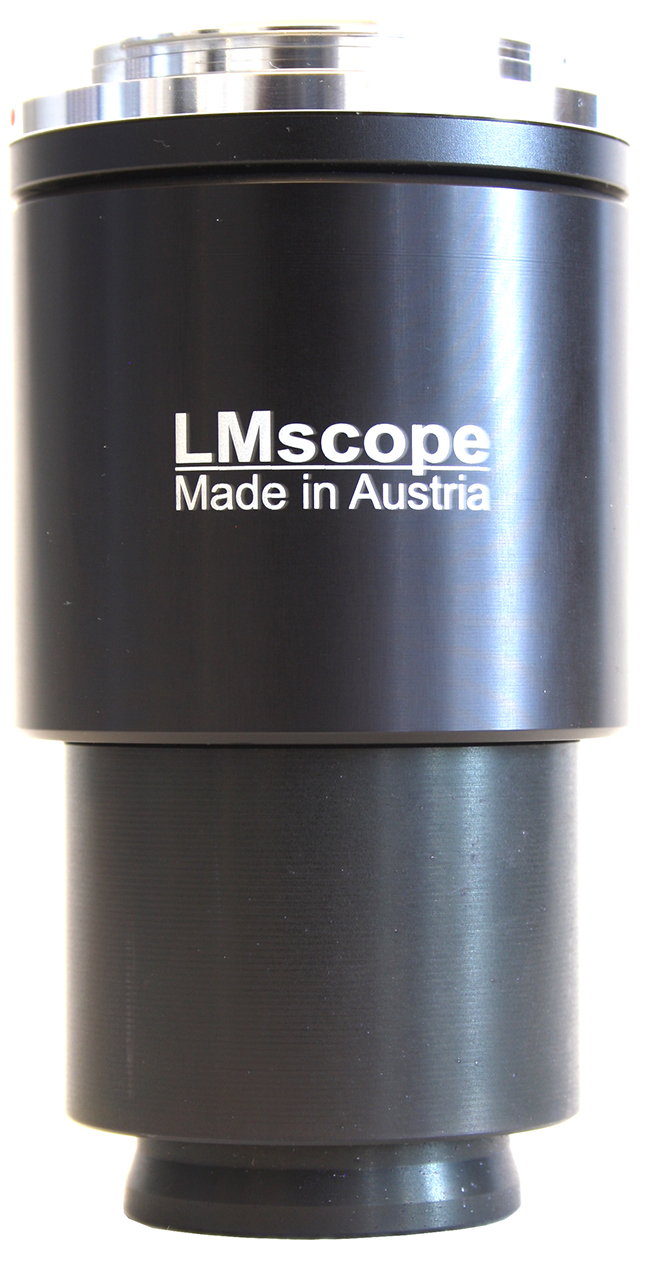
2) For more flexibility of use, we offer a high-performance wide-field adapter solution for cameras with large sensors (APS-C and full-frame), which delivers the best possible image quality. The adapter solution is optimised to the sensor size of the respective camera. With just a few accessory parts, it can also be used on other microscopes.
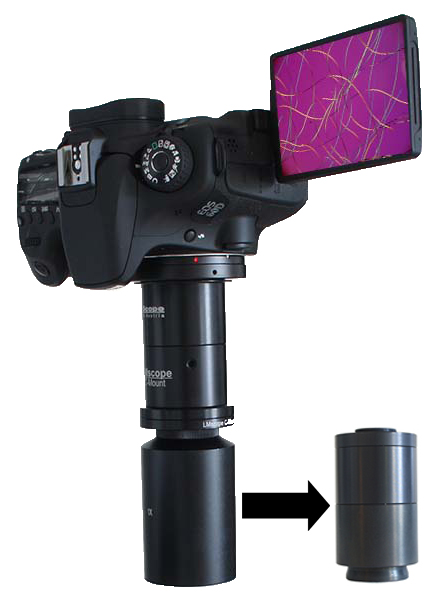
Image: Motic1X38 as connector between microscope and wide-field adapter
3) Specialised adapter solution for C-mount cameras upon request.
If you have opted for the binocular version of the microscope, the camera can, of course, also be attached to the eyepiece tube. To attach the adapter, one eyepiece is removed and the camera-adapter combination is put into its place.
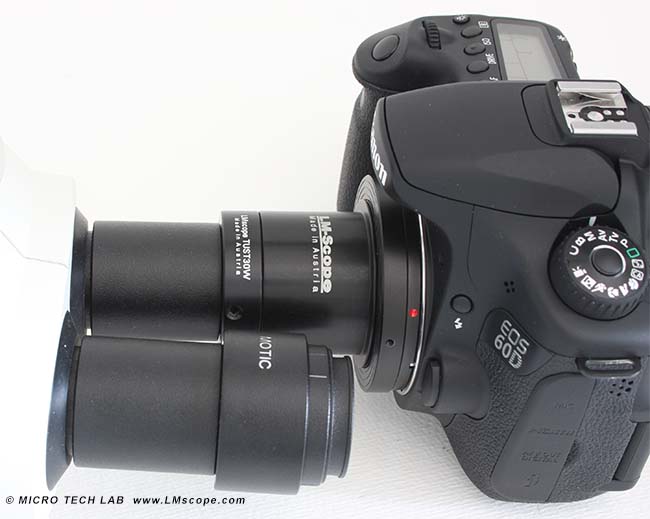
Designed with a comfortable viewing angle of 45 degrees, the eyepiece tubes of the AE2000 offer a 20 mm field of view (WF 10x). The specimen stage features coaxial coarse/fine focus controls and is conveniently low positioned. A cross stage with inserts for cell culture vessels and standard specimen slides is also available. The condenser with a 0.3 N.A. enables a working distance of 72 mm. When the condenser is removed, the maximum working distance is 184 mm, which is quite decent.
The standard version of the AE2000 comes with a 6V/30W halogen illumination, but it can also be upgraded with an LED module, which seems like almost the norm these days. As a new safety precaution, Motic has implemented a sleep mode on the AE2000, which automatically turns off the microscope when it is left inactive for more than 15 minutes.
Conclusion: The Motic AE2000 is a good inverted microscope with an infinity-corrected optical system. The trinocular version is very well suited for photomicrography applications – however, due to the microscope design, only for brightfield and phase contrast. For standard requirements, it is a real alternative to the routine microscopes of big name manufacturers.
Photography:
Fitting the microscope to digital single-lens reflex (DSLR), mirrorless interchangeable-lens cameras (MILC ), digital single-lens mirrorless (DSLM) or C-mount cameras is easy with our LM digital SLR adapters, which feature a plan achromatic optical system. Our products make it possible to capture top-quality microscope images. To help you select the adapter that is right for your camera, we have set up an online configurator on our website. You can also email us – ideally with attached photographs of your microscope.
Modern DSLR and single-lens mirrorless (DSLM) offer the latest technology and are generally very well suited for microscopy applications. Most of them can be controlled remotely via PC/Mac. Because of their high sales volumes, they offer an excellent price/performance ratio compared to special-purpose microscope cameras.
Features of top DSLR and single-lens mirrorless cameras (DSLM):
- Large, powerful full-frame sensors (36 x 24 mm)
- Sensor resolution of 61 megapixels or 240 megapixels with Pixel Shift technology
- High light sensitivity (ISO 400,000+)
- Extensive dynamic range (up to 15 aperture stops/f-stops)
- Short exposure times (1/8000 second) up to 1/32,000 seconds using the digital shutter
- 4K Ultra HD or 8K Ultra HD video function
- Live video capture on external monitors in ultra HD quality
In most cases, these cameras are significantly more powerful than microscope cameras with smaller sensors (1/2" or 2/3"). On our website you will find our current camera recommendations and a camera ranking which is specifically tailored to microscopy applications.